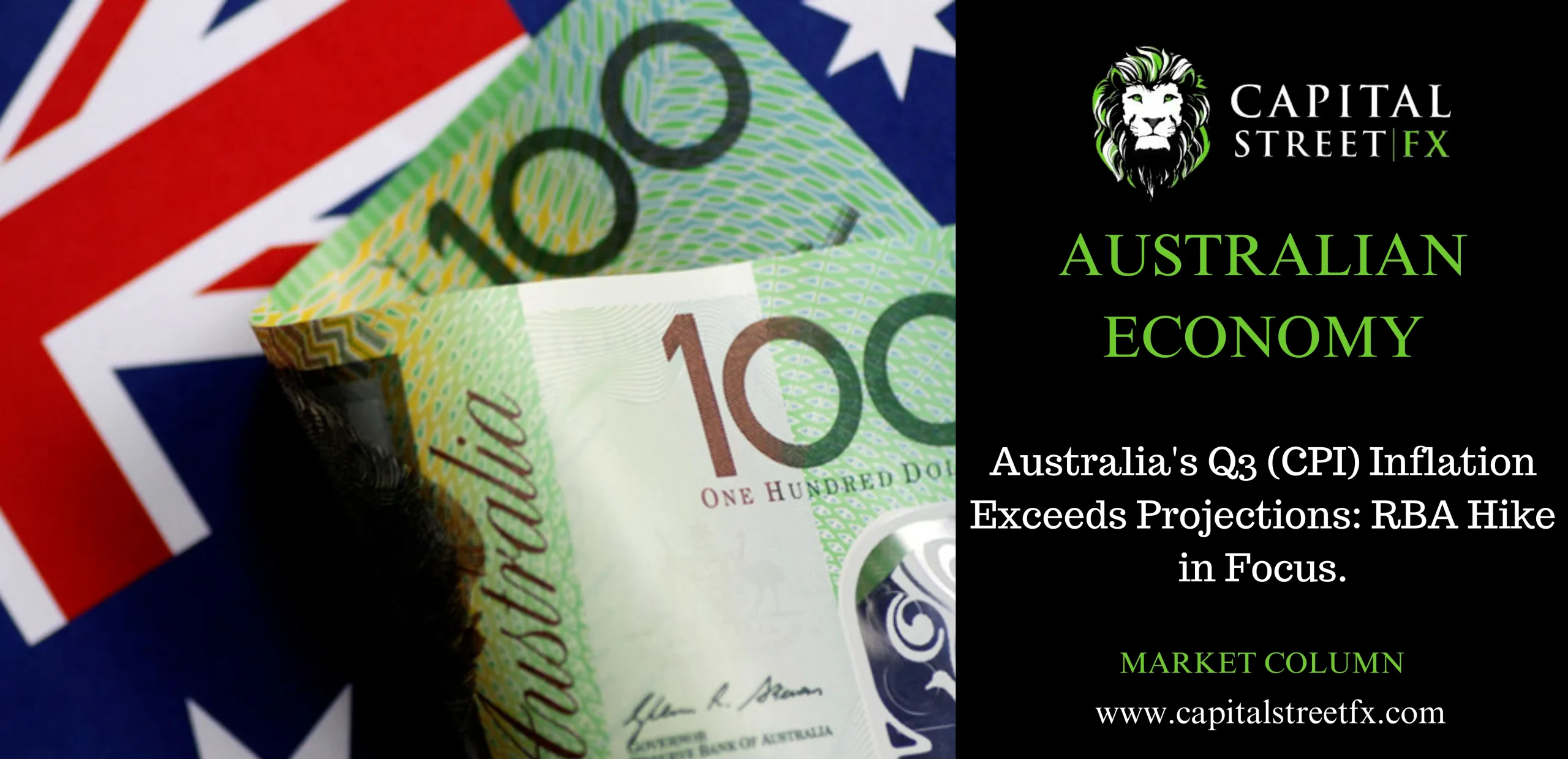Australia’s Q3 (CPI) Inflation Exceeds Projections: RBA Hike in Focus.
In recent months, Australia’s economic landscape has witnessed a significant shake-up, primarily driven by an unexpected surge in consumer inflation during the third quarter of the year. This surge, largely fueled by soaring oil prices, has ignited discussions and speculations about the Reserve Bank of Australia’s (RBA) possible interest rate hikes. In this article, we’ll delve into the details of this unexpected inflation uptick, its implications, and the potential responses from the RBA.
Understanding the Surge
According to data from the Australian Bureau of Statistics (ABS), the Consumer Price Index (CPI) recorded a remarkable 1.2% increase during the third quarter, surpassing the anticipated 1.1% and the previous quarter’s 0.8% growth. Year-on-year figures tell a similar story, with CPI inflation for the quarter reaching 5.4%, exceeding the expected 5.3% and the second quarter’s 6%.
This unexpected inflation surge, while taking many by surprise, can be attributed to a notable spike in fuel prices. Over the past quarter, global oil prices have witnessed a remarkable upswing, leading to a 7.2% surge in automotive fuel expenses during the third quarter.
A Mixed Bag of Trends
While fuel costs took the lead in driving up inflation, other elements of the CPI remained relatively stable. Expenses related to housing and electricity maintained a steady pace of growth, with no significant fluctuations. Food costs, which had been witnessing robust increases over several quarters, seemed to stabilize, offering a momentary respite for consumers.
The RBA’s Concern
The inflation figures may have surprised some, but they remain significantly above the RBA’s annual target of 2%. The central bank, however, holds a long-term perspective and anticipates a substantial easing of inflation by late 2025. Despite maintaining its benchmark interest rates since May, the RBA remains open to the possibility of further hikes, especially if the inflation outlook continues its upward trajectory.
The RBA’s Stance
RBA Governor Michele Bullock had already issued a warning earlier in the week, emphasizing the risks associated with persistent inflation and hinting at the likelihood of further rate hikes to counteract high price pressures. This, in turn, led to a 0.4% increase in the Australian dollar following the inflation report, signaling that market participants are increasingly factoring in the possibility of an imminent rate hike.
The RBA has, to some extent, been proactive in addressing the inflation challenge. Since May 2022, it has raised its benchmark cash rate by 400 basis points, which has shown some success in mitigating overheated inflation. However, the tight labor market and global commodity price disruptions have posed challenges to the RBA’s efforts to swiftly contain inflation. Remarkably, Australia’s economy has demonstrated resilience in the face of substantial interest rate hikes.
Looking Ahead
The next chapter in this unfolding economic story is the RBA’s forthcoming meeting scheduled for early November. This gathering of Australia’s key monetary decision-makers will undoubtedly provide insights into their strategies and plans for maintaining economic stability while managing inflation pressures.
In conclusion, Australia’s unexpected surge in Q3 (CPI) inflation, driven by rising oil prices, has thrust the possibility of RBA interest rate hikes into the spotlight. Although the figures remain significantly above the RBA’s annual target, the central bank is actively considering measures to tackle this issue. As Australia’s economy continues to adapt and respond to this changing landscape, all eyes are on the RBA’s November meeting for further guidance.

